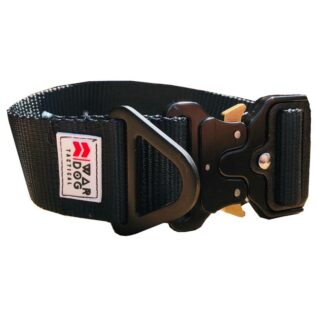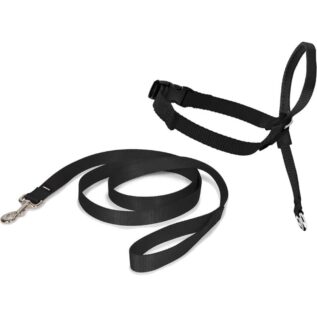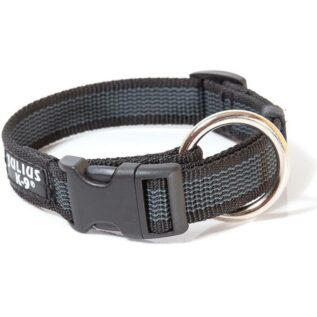How to Choose Dog Collars & Dog Leashes
Introduction
As a dog owner, one of the most important things you'll need to do is choose the right collar and leash for your furry friend. These essential accessories not only make it easier to handle your pet but also play a critical role in their safety, training, and identification. With so many options available, it can be overwhelming to find the perfect collar and leash. Fear not, we've got you covered. In this article, we'll explore the factors to consider when choosing dog collars and leashes and discuss the various types available.
The Importance of Dog Collars & Leashes
Safety
Dog collars and leashes are crucial for your pet's safety. A collar with an attached ID tag can help others identify your pet if they get lost, while a leash ensures that your dog remains close to you, preventing them from running into dangerous situations.
Training
Collars and leashes are essential tools for training your dog. They provide control and consistency, which are vital for teaching commands and reinforcing good behavior.
Identification
A collar with an identification tag is an easy and effective way to ensure your dog can be identified and returned to you if they become lost.
Factors to Consider
Size
The size of the collar and leash should be appropriate for your dog's breed, size, and strength. A collar should fit snugly but comfortably, with enough room for you to fit two fingers between the collar and your dog's neck. The leash should be long enough to give your dog some freedom, but not too long that it becomes difficult to control them.
Material
Dog collars and leashes come in various materials, including nylon, leather, and metal. Consider your dog's size, strength, and activity level when choosing the material. Nylon and leather are popular choices due to their durability and comfort.
Style
Choose a collar and leash that reflect your dog's personality and your personal style. There are countless options available, from simple and functional designs to more fashionable and decorative options.
Functionality
Consider the primary purpose of the collar and leash. Are they for everyday use, training, or special occasions? Select a collar and leash that meet your specific needs.
Types of Dog Collars
Flat Collars
Flat collars are the most common type of dog collar. They're usually made of nylon or leather and feature a buckle or snap closure. These collars are suitable for most dogs and can be used for everyday wear and basic training.
Martingale Collars
Martingale collars, also known as limited-slip collars, are designed to prevent dogs from slipping out of their collars. These collars tighten when your dog pulls but have a limit to prevent choking. They are particularly useful for dogs with narrow heads, such as Greyhounds and Whippets.
Head Collars
Head collars, sometimes called gentle leaders, fit over your dog's head and muzzle, providing more control than traditional collars. These collars are ideal for dogs that pull or have behavior issues, as they can help redirect your dog's attention back to you.
Training Collars
Training collars, such as prong or choke collars, are used to correct behavior during training sessions. These collars should be used with caution and only by experienced dog owners or trainers, as improper use can cause injury.
Types of Dog Leashes
Standard Leashes
Standard leashes are the most common type of leash and are typically made of nylon or leather. They usually range from 4 to 6 feet in length, providing enough space for your dog to explore while still allowing you to maintain control.
Retractable Leashes
Retractable leashes have a mechanism that allows the leash to extend and retract as your dog moves. These leashes can provide your dog with more freedom, but they can also be dangerous if not used correctly, as they can cause injuries to both you and your dog.
Adjustable Leashes
Adjustable leashes can be lengthened or shortened to suit your needs. These leashes are versatile and can be used for various activities, such as walking, training, or tethering your dog.
Training Leashes
Training leashes are designed specifically for teaching your dog commands and reinforcing good behavior. They come in various lengths and styles, such as long lines or slip leads.
Conclusion
Choosing the right dog collar and leash is essential for your dog's safety, training, and identification. By considering factors such as size, material, style, and functionality, you can find the perfect collar and leash for your furry friend. Remember to explore the different types of collars and leashes available to ensure you make the best choice for your dog's specific needs.
Frequently Asked Questions
How do I measure my dog for a collar?
To measure your dog for a collar, use a flexible measuring tape to measure the circumference of your dog's neck, then add two inches to determine the correct collar size.
How often should I replace my dog's collar and leash?
You should replace your dog's collar and leash when they show signs of wear and tear or when they no longer fit properly due to growth or weight changes.
Are harnesses better than collars for dogs?
Harnesses can be a better option for some dogs, particularly those with respiratory issues, neck injuries, or a tendency to pull on the leash. However, collars are still a necessary accessory for identification purposes.
Can I use a retractable leash for training my dog?
Retractable leashes are not recommended for training, as they can encourage pulling and make it difficult to maintain consistent control. Opt for a standard or training leash for training purposes.
How can I clean my dog's collar and leash?
Most nylon and leather collars and leashes can be cleaned with mild soap and warm water. Be sure to rinse thoroughly and allow them to air dry completely before putting them back on your dog.





























